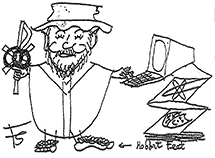In the 2001 census analysis of religious groups in Ontario, the largest grouping is Roman Catholic; the second largest is “no religion.”
How many of the “no religion” populace are deterred or disgusted by a blatant use of power, emotional and social, by institutional religions as they see it? How many of the “no religion” populace believe that religious people, when they enter their place of worship “park their brains at the door.” Or, like the noted novelist Martin Amis, as interviewed on CBC radio, do they hold that people who believe the religious stuff are stuck at level of 3-year old children? Presumably, this “no religion” is prompted by a lack of scientific evidence for any kind of afterlife, or of spiritual life.
Amis thinks of religion in this context as largely depending on a belief that death is followed by eternal life. For him, reality sets in for each of us when we realize that we are extinguished by death. Indeed, that reality is maturity, and that facing death honestly and freely accepting it is a sign of spiritual wholeness.
Amis is on to something important here, and it is interesting that at least two of the outstanding leaders in Christian faith recognize his point of view, of life being futureless, the world outlook pointless.
Rowan Williams, an outstanding theologian who is also the Archbishop of Canterbury in the Anglican Communion, has a penetrating analysis of the role of artists in the spiritual life. He says that the primary activity of a Catholic writer such as Flannery O’Connor is the “accurate naming of the things of God. To arrive at the point where the world can be truthfully named in its relation to God involves some grasp of the world as object of pointless, ’futureless’ love; it must therefore involve levels of bewilderment, deep emotional confusion and frustration in the process, even a blurring of the boundaries between love and rejection (since we are understandably frightened of replacing ordinary human affection with this radical and disabling love).” (“Grace and Necessity” Moorhouse, 2005, pages 124-127)
The “radical and disabling love” is the love of God revealed to us mortals through the death of Jesus. “Futureless?” On the cross, Jesus is heard calling out the Psalm: “My God, my God, why hast Thou forsaken me?”
The Reverend John Polkinghorne, KBE, was Professor of Theoretical Physics at Cambridge University. An Anglican priest, he has received the Templeton Prize for the Advancement of Religion. I quote from his book “Science and the Trinity”, Yale 2004, page 86, and the journal, “Theology and Science” 2003, page 47.
He writes: “The fundamental question posed is whether we live in a world that is a cosmos or a chaos. Does the universe make total sense, or is its history ultimately ‘a tale told by an idiot, full of sound and fury, signifying nothing?’ [Naturalism] will tend to agree with Steven Weinberg that the more he understood the universe, the more it seemed pointless to him.
“Death, cosmic or human, is real, but for the theist is not the ultimate reality. It is to the everlasting faithfulness of the creator that creatures look for the hope of a destiny beyond their deaths.”
The “everlasting faithfulness” is a of a God whose love is disarming because God accepts all of us, pro- or con- religion, believers or not, with total love.
So, Martin Amis: to Whom or to What are you everlastingly faithful?
We hope, at least to three-year-olds. That way lies heaven.
COMMENT on # 30
One response to last week’s discussion was from my friend Charles Bull,
of Berwick, Nova Scotia. He writes:
I’ve long thought that if God’s power is the power of compassion and not the power of coercion, then playing God is our highest calling.
Ordinary everyday human waking consciousness
is an unfathomable mystery
opening directly onto the divine.
For this individual consciousness
is but a reflection and expression
of the Supreme Consciousness
whom we call God,
Fountain of Life,
Knowing in every act of knowledge,
Loving in every act of love,
and the very Joy of Being.
With hearts broken
open
in compassion
let us begin to realize this truth.
That Consciousness is experienced by 3-year olds, and younger.

